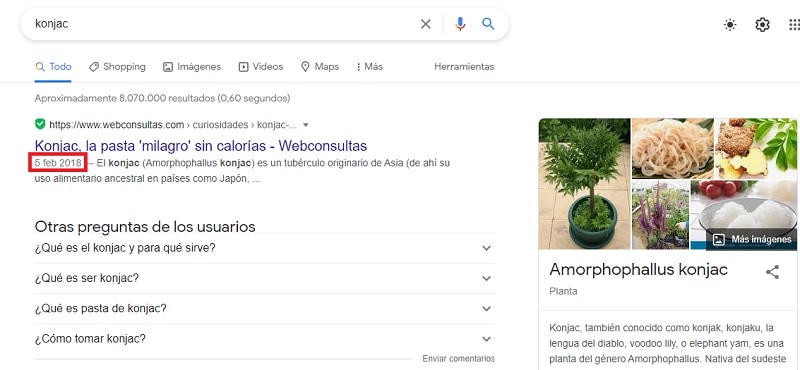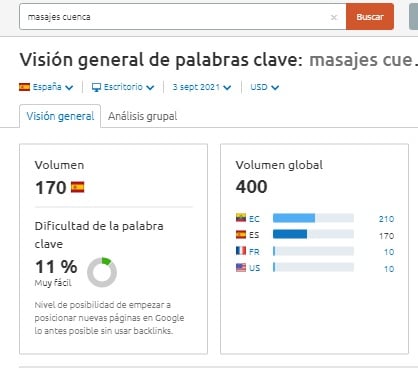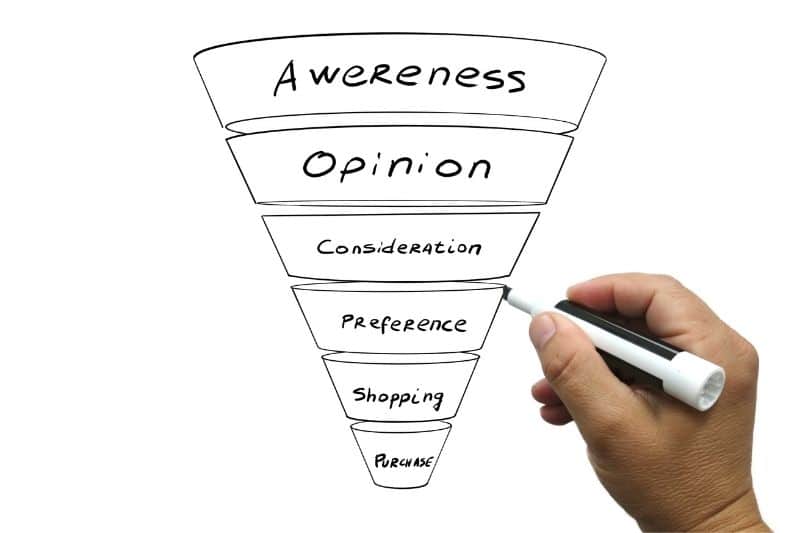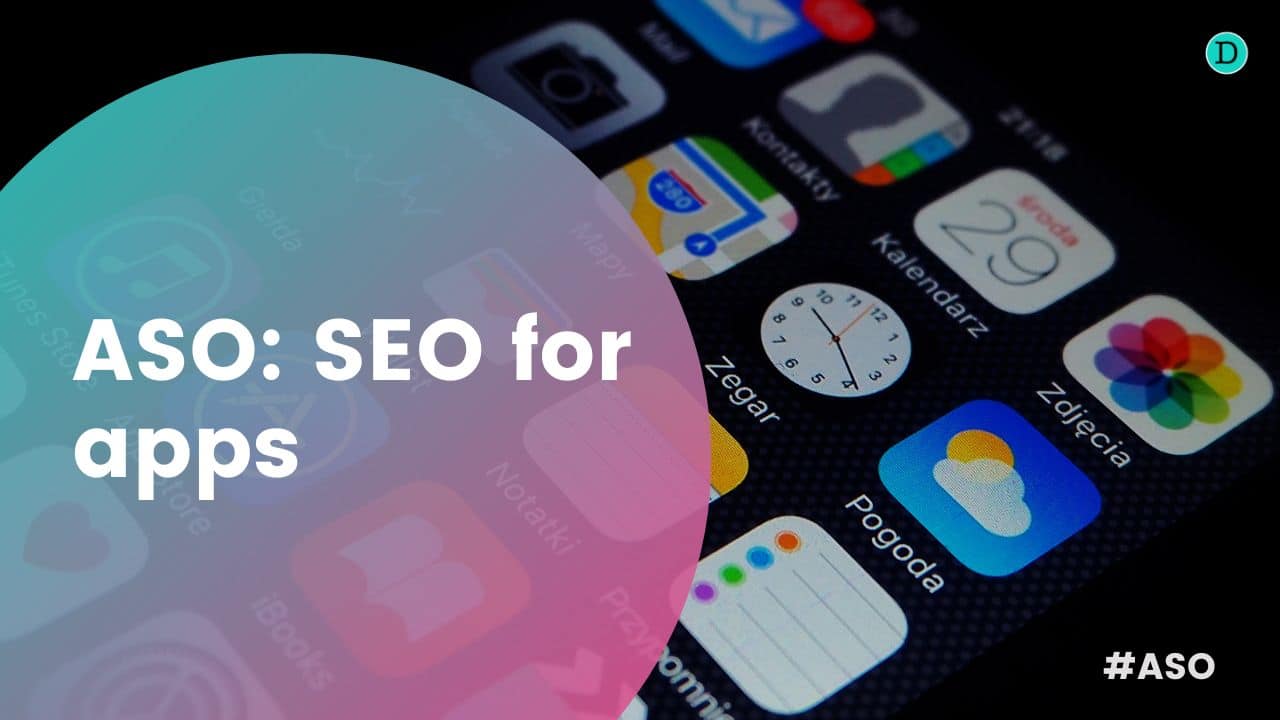
Pablo Herrera
Head of SEO & Content
The first step before making a SEO content strategy can be overwhelming. There is a lot to consider. At least, if we want to do it right.
We start from a basic idea: SEO content strategy seeks to offer different content to be useful to people who are going to make a purchase decision related to our product or service.
This is where one of the first keys comes from.
A successful SEO content strategy is not the one that brings the most traffic, but the one that converts the most.
According to Google, 59% of consumers (and rising every year) research online before buying a product. Depending on your industry, this percentage can go up or down.
To be clear, few people research online before buying eggs or potatoes (although there are some), but many more people look online before buying a computer, a mobile phone or a trip, for example.
Moreover, it is not always about price. Rather, it has more to do with the familiarity of the product or service. Going back to food, products like konjac pasta have high search volumes.
In the end, in SEO, common sense always prevails. If you don’t know what something is or what benefits you have, you search for it. It’s as simple as that.
Consumers are also grateful to companies that have helped them. According to The Big Book of Facts & Statistics, 95% of shoppers consume from companies that offered them content at every stage of the journey.
Here’s another key point, don’t just go for the commercial or transactional keyword. The customer has to know you in order to trust you.
What is an SEO content strategy?
índice

An SEO content strategy consists of a series of studies, analyses and actions aimed at achieving greater conversion with our online content.
We say conversion and not sales because sales are not always the objective. This, which must be defined beforehand, can be to achieve a download, a phone call, get some data or even simply a qualified visit. The latter, for example, in informative projects.
There is not always money as such.
Normally, the SEO content strategy takes the form of a blog. You can also create an SEO strategy on YouTube, make a podcast for companies or use another online medium to work on SEO content (or combine them all).
Having a blog not only has SEO benefits but also branding benefits. Going back to The Big Book of Facts & Statistics, 70% of consumers prefer to learn about a company through a post rather than an advertisement.
Furthermore, according to a HubSpot report, companies with a blog have, on average, 55% more visits than those without.
Despite these figures, I must also say that it is not always necessary to have a blog. You can work on the SEO of the website and get additional traffic in other ways, for example, with online advertising.
Each business and each budget requires a specific marketing strategy. In addition, I recommend you to read our business intelligence expert’s article on the reasons why you should not start a digital business.
Sometimes, it’s not that you shouldn’t go for SEO, it’s that the business won’t work. Don’t waste your time and money if you don’t have a winning product/service.
SEO content strategy: a step-by-step guide
Now that you (hopefully) understand what an SEO content strategy is and what it’s for, I’m going to explain how to do it. Step by step, so that you can put it into action.
The most important thing: you have to think things through. It’s not just a matter of sitting down in front of the computer and starting to write. Not even after choosing a keyword that seems interesting.
We have to think, analyse and act accordingly. We also have to measure and make changes. That’s why we talk about strategy. It is not a trivial choice of term.
Fortunately, you don’t have to win an impossible war. Today, the network offers plenty of opportunities if we know how to do it.
And how do we do it? Here we go.
1. Understand your business model

It may seem the most obvious thing to do, but in my experience I can say that sometimes it is the most complicated thing to do. Whether you want to be self-sufficient or you prefer to put the strategy in the hands of experts.
How well do you know your business and what are its most important points? In which products or services are you really competitive?
Here I tend to see two common problems. The first is not having a clear value proposition. That which makes your business work. And, of course, there are also offline value propositions that do not work online. For example, proximity.
A local shop that is open 7 days a week has a clear value: its opening hours. On the Internet, this is absolutely worthless. Everything is available 24/7, so you will have to look for other extra points.
An example could be exclusivity, selling products that are difficult or impossible to find. Or even simply usability. That is, having an ecommerce that is much easier and more convenient to use than the competition. Or offering more complete nutritional information in accordance with certain diets or health problems. You have to give something more.
The second thing is to be clear about whether the value proposition perceived by the company is the one that consumers perceive. Believe me when I tell you that there is often significant dissonance on this point. Ask your audience.
The second part is more complicated: is there demand, is it worth the investment? Check if there are acceptable search volumes for those elements that are part of your value proposition.
1.1 How do you know if there is demand?
When I talk about checking for search volumes, I mean in a broad sense. I mean, you may have a massage parlour and your best service is a type of massage inspired by traditional Jarawa healing methods.
Well, “Jarawa massage” is probably not intended as a search term. But think of it in a broad sense: oriental massages, oriental therapies, traditional healing methods, etc… are words that have good volumes and where your type of massage can fit in.
In some cases, especially in certain food products, it may also be that there are no volumes today but there may be volumes tomorrow. For example, in the example I mentioned in the introduction of konjac pasta.

This type of pasta, which comes from a tuber and has no calories, has become fashionable since 2020 thanks to the fact that several influencers have started to use them (don’t rule out influencer marketing if you have the cash for this kind of thing).
If we look at the interest graph, we can see how the pandemic triggered interest and how it continues to crescendo. According to SEMrush data, only in Spain, with 9.9K monthly searches.

A Google search for konjac shows that the first result is from 2018, two years before the interest in konjac skyrocketed. At that time, positioning without competition was easier and maintaining a position is also easier than stealing it from a strong competitor.
So if we have time, let’s not rule out the possibility that interest could rise. Common sense should also be applied here. A new work methodology that arrives from the United States is likely to end up expanding its searches, the name of a type of screw that is not searched for now will probably not be searched for in 2, 3 or 5 years.
2. Do a full SEO audit or create your own website

The next step is equally fundamental (actually, all the steps are fundamental, let’s face it). It is to do a complete SEO audit of the current situation.
In case you are not online yet, it would be the time to think and design the website, always according to SEO guidelines.
In the audit we will check the current situation. Here I am going to give you a piece of advice. Don’t trust free audits. If someone tells you that they will send you an audit of your website in 15 minutes, they are not doing it right.
They are simply adding your company name in a tool and getting what comes out of it, without any verification or depth. That may be a first step to check for major errors, but it’s not a real SEO audit.
However, it is one of the most widespread methods to get clients. Watch out. It is also a no-brainer, but the results have to be interpreted and, at the moment, the tools do not interpret anything.
In the SEO audit you have to check the current situation (yours and your competitors’): linkbuilding, domain authority, evolution, best articles, CTRs, SEO optimisation, indexation, titles, meta descriptions, pages that bring more leads and sales (if you have it enabled), conversion rates, bounce rates, content that can be improved, etc…
In addition, a good SEO audit includes actions and deadlines to solve the problems.
Once our page is SEOfriendly, we can move on to set the objectives.
3. Decide on the objectives we want to achieve

Objectives are necessary for two main reasons. First, they are intrinsic to having a strategy. A strategy for what? Objectives answer that question.
Secondly, so that we can check whether what we are doing is working.
Of course, objectives must be specific and measurable. An objective that says: “sell more” or “have more visitors” is not valid. Why? Because it cannot be measured effectively.
The best way is to use SMART (Specific, Measurable, Achievable, Relevant and Time-bound) objectives.
For example, if you want to sell more, the goal would be: “achieve a 20% increase in sales through the organic channel in one year”. If you want to have more visitors: “achieve 50% more organic visits in six months”.
We can be as specific as we want. It is also interesting to set goals that take into account our target audience. If we have created our buyer persona, one objective can also be to improve our reach to people who meet that target.
Many of the objectives will also be determined from the previous SEO audit. For example, if we have found that most of our visitors come from Mexico (something quite common as it is the country with the highest number of Spanish speakers in the world) but our business only sells in Spain, we can set ourselves the goal of improving the percentage of visitors based in Spain.
Another option is to opt for international SEO and try to expand the business to another market from which we already have part of the traffic. But business decisions are independent from the SEO content strategy, so let’s continue with it.
4. Hacer un keyword research

I wrote this article about keyword research focusing on the more practical part: tools, keyword selection, etc… and here I will talk about the more strategic part.
First of all, which keywords should I discard? Of course, those that are not focused on your business model. That’s why we have devoted time and love to point 1.
Secondly, very general keywords. Going back to jarawa massages, maybe trying to position yourself with massages doesn’t make much sense. Besides, if our business is local, even if we use long tail keywords, the smartest thing to do is to geolocate them.

Don’t use oriental massages, use oriental massages in Chamberí or Cuenca. Here is another example of a problem with geolocation. Cuenca, in Ecuador has six times the population of Cuenca (Spain) and 40 more searches on average per month for the geolocated keyword massages. You will have to avoid visits from Ecuador because they are not your target audience.
Likewise, as with the objectives, we have to be realistic. Massages in Cuenca has an 11% difficulty rate according to SEMrush, which gives us plenty of room for manoeuvre. If a keyword is difficult, it is better to look for another one, at least at the beginning, because it will be very difficult to position it if you don’t have many resources.
Finally, another problem is excess. Don’t try to rank for more words than necessary. Focus on keywords that correspond to the stages of the sales funnel and fight for them.
Often if a company has a very broad catalogue of products or services, it tries to cover as much as possible and its SEO work ends up being diluted. That is why in point 1 we already selected the differential value. Now it is time to check which are the strong products or services that also have a volume that makes them competitive.
4.1 Types of keywords

We can divide keywords into informational, commercial and transactional and ideally include all three in our SEO content strategy.
Informational keywords are those that offer information about a topic. Following the example of jarawa massages, these could be keywords of this type: “how to solve a back pain”, “fashionable oriental therapies”, “types of massages”, etc…
These are keywords in which the search intention is focused on information. You are not looking to buy anything or to know more about a product, you simply want to broaden your knowledge.
These keywords correspond to the first part of the sales funnel and are often discarded (a serious mistake) for not seeing their future potential.
Commercial keywords are those that occur when there is already a purchase decision. For example, “how much does a massage cost” or “best massage centres in Cuenca”.
Finally, there are the transactional keywords, which are keywords that already include the transaction itself. In this case, “book a massage in Cuenca”, or “buy oriental massage” could be two clear examples.
For an SEO content strategy to work, you have to gain the user’s trust. This is achieved by being there for them from the very first moment. Let’s take a closer look at the purchase stages.
4.2 Etapas de compra

The purchase stages, the sales funnel, the customer experience map or the customer journey are, with some nuances (such as the point of view) irrelevant to this practice, the same.
We start with a person who is not aware that they have a problem or need. I always insist that we look at it in a broad sense. Let me give you my real example. Two days ago I bought a pair of trainers. I didn’t really have any need to buy them or any problem with the current ones.
I simply found a tweet with a photo talking about how nice the trainers were that were sold in the online shop of the cooperative of manteros in Barcelona. I thought they looked nice and also, at some point months ago, I had read about the initiative in a news item.
This would be the first step. Find out that the product/problem exists. It could be through SEO, but in my case it was through the media. The problem I discovered was: the manteros are people who have risked their lives to get to Europe and are looking for a formula that allows them to make a legal living by setting up their cooperative and their online shop.
Personally, I am not a very consumerist person. However, the information I received was aimed specifically at my profile. A person who is concerned about social issues and who doesn’t mind spending more money than necessary if he understands that it is for a just cause.
The problem was transformed into: the street vendors are looking for a way to make a living and I am doing absolutely nothing to help them. Even so, I read the news and forgot about it until I saw a tweet in which they showed the shoes. Beautiful, by the way.

Because the sales funnel process is quite slow and often takes months or even years.
Here you have to target informational keywords. They should be targeted specifically at your buyer persona.
From here I searched for information about trainers. We moved on to the transactional keyword. The price was much higher than I would consider buying any item of clothing. However, in the information I found there was additional added value that made the extra expense worthwhile.
To cover my need to help the manteros was added on the one hand the aesthetics, which is always important and, on the other hand, that they were shoes designed in Spain, manufactured in Spain and Portugal complying with all the regulations, vegan, genderless and made in small workshops.
In one fell swoop, by buying the shoes, I could contribute to solving several problems that concern me. I was consuming a product of proximity, respectful of the environment and working conditions, designed here and that favoured the situation of an oppressed collective.
Suddenly I had not one need resolved with the purchase, but several. And only one drawback: the price. Putting it on a scale, the price ceased to be important.
Of course, it worked because of my personal characteristics and concerns. This is why it is so important to define customer archetypes perfectly.
There will be many other people who are not sensitive to the problems of the manteros, to vegan clothing or to the production of sustainable and local fashion. However, these keywords work with the target audience of these trainers.
And I have to insist on the aesthetic aspect, because if the trainers had looked ugly to me, no matter how much I would have liked to collaborate, I wouldn’t have bought them. So your product or service has to work beyond the social or environmental benefits it brings, otherwise SEO can’t work magic.
To summarise, this journey that I have described and to which the content strategy must be taken goes like this:
- Ignorance of the problem or need.
- They recognise the problem
- They find out about the problem and its solutions.
- They discover your product or service for that problem
- You are more attractive than your competitors’ options
- They buy your solution
I repeat, because it’s so important when it comes to conversion, that you have to speak in the language that matters to your customer. If I see the shoes I bought in a standard shoe store or in an Instagram advert, I wouldn’t have bought them.
I wouldn’t have bought them because of the price and because I don’t buy clothes or shoes unless I need to. And working in the digital marketing world I am even more immune to advertising strategies. However, this product sold me so well on its benefits that I now have more shoes than I need.
Select the keywords that will seduce your buyer persona.
5. Carry out strategic content planning and scheduling

Once we have the keywords we are going to work with, we have to put them in the calendar.
As I have shown you before, the first stages of the sales funnel are about giving visibility to the problems that your product or service serves. So focus on that first.
I won’t tell you to rule out transactional or commercial keywords, but these will work best for you when you have enough informational keywords positioned. So if you are going to work on 10 keywords, I recommend that 8 of them are informational.
First get the customer’s trust, tell them what they are interested in. Then you can focus on selling to them.
Remember also that the contents must be evergreen. That is to say, that they work all year round, that they do not have an expiry date.
Another important aspect of planning is to add promotional actions. You have to move the content, publish it on networks, update it periodically, look for links with your linkbuilding strategy, etc…
The work doesn’t end when you hit publish, another phase of work begins. However, I am not going to focus on this and we are going to move on to another very important point.
6. Measure your results

You’ve got the content online and you’re promoting it, what else? Well, the SEO content strategy doesn’t end with measurement.
You will have to measure constantly and not only to check the fulfilment of objectives. It’s also important not to despair. SEO is a slow job, if you want speed and immediate results use SEM.
Create reports and alerts and set goals in Google Analytics to check that everything is working properly and analyse the data you get. Also the organic data from Google Search Console.
When testing (e.g. changing meta descriptions if you don’t have a good CTR) also measure each result. Take into account the dwell time, demographic and interest data to make sure it matches your buyer persona, conversion data per page, etc…
You may need to adapt your strategy. If, for example, you discover that there is a population segment that works better for you and you were not targeting it, adapt. SEO is slow work, but it also requires speed.
Finally, always be clear about your ROI. That is, how much your SEO strategy has cost you and what return on investment you have. That will be the meter that will show you (in the long run) whether or not it has been a success.
Advantages of having an SEO content strategy

Finally, I don’t want to end this long article (sorry) without talking about the advantages more clearly. Beyond the obvious (getting visits and leads), what advantages does creating an SEO content strategy offer us?
As I mentioned before, there is a clear improvement of the user’s trust in the brand. It improves its visibility and authority and makes it a reference in its field (with informational keywords).
Another advantage that is sometimes forgotten is that it facilitates better segmentation for social selling and Google Ads campaigns. By having a qualified audience, you can use it for remarketing and improve your sales.
One last advantage I don’t want to leave unmentioned has to do with education. Yes, educating customers. With your content you can explain how to use your product or service better, when it is best, solve common doubts, etc…
All this will lead to greater customer satisfaction and, ultimately, greater chances of retention and recommendation. In other words, re-selling and gaining new customers. A real win-win situation.


